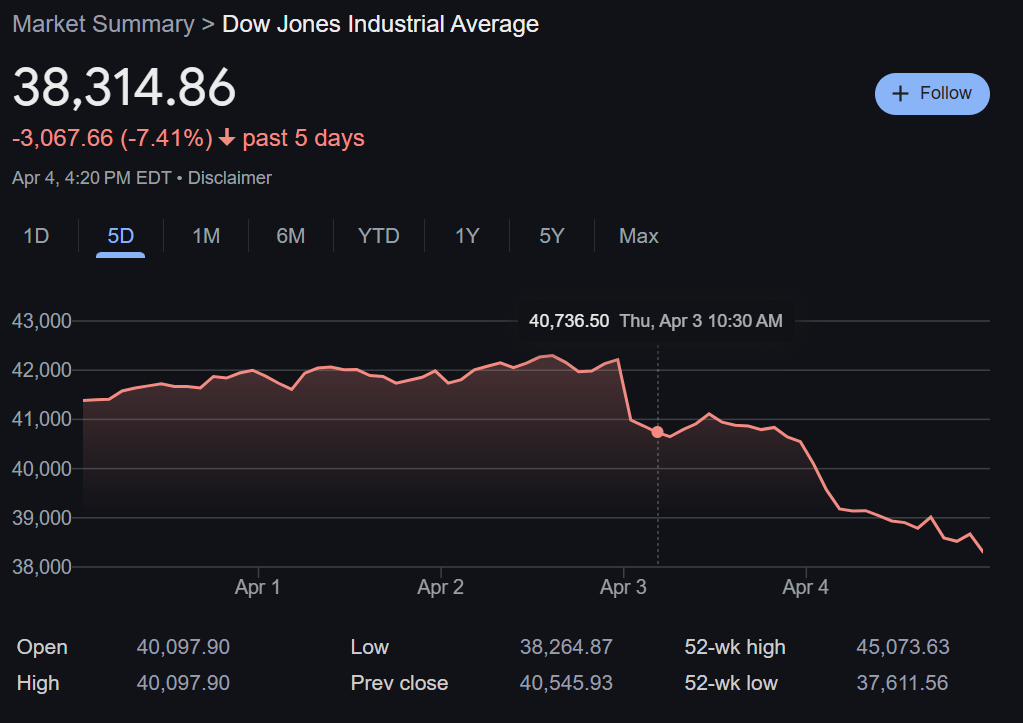On a dramatic Friday that is already being etched into the annals of Wall Street's stormy history, the stock market underwent one of its most staggering descents in recent times. The Dow Jones Industrial Average was left reeling with a free-fall surpassing 2,200 points—a dip of about 5.5%—as the tremors from China's freshly minted tariffs targeting U.S. imports sent ripples echoing through the world's financial capitals. Both the S&P 500 and the Nasdaq were not spared, each taking a nosedive close to the 6% mark. With typhoons of trade tensions starting to brew with renewed ferocity, the globe braces for economic squalls ahead.
Yet amidst this financial tempest lies another story—one unfolding on the sleeves of collectors' albums and the bidding rooms of card auctions. Trading card collectors and investors, who have relished in a veritable golden age of booming card values, find themselves unwitting passengers on this market rollercoaster. In recent years, trading cards have metamorphosed from dusty tokens of nostalgia into formidable investment vehicles, enticing a blend of seasoned collectors and curious newcomers. Stars of the ballfield and court—be it Shohei Ohtani swinging for the fences, Aaron Judge towering over pitchers, or rookie legends who now reside as holy grails—have seen their card counterparts elevate to soaring financial heights, buying and selling for eye-watering sums.
However, the market's recent precipitous decline spells a potential shift in these rosy charts. History tells us that in times of economic uncertainty, consumers become financial hoarders. Discretionary spending, which trading cards often fall under, could see contractions as wallets clamp shut in readiness for leaner times. This could herald a short-term cooling of a fervent card market that's been running white-hot up to now.
Yet, here lies an interesting paradox: financial turmoil often begets the search for safe havens. Just as investors cast their net wide during routine booms, during busts they hunker down, recalibrating their asset portfolios. It is in these times, with market waters choppy and conventional assets dipping turbulent, that tangible, alternative investments like trading cards can suddenly gleam with allure. Historical precedent shows that premium collectibles—and the trading cards of yore are no exception—often hold steadfast in value or even exhibit appreciation amidst uncertainty. Rarity, pedigree, and desirability have turned some limited-edition and graded cards into viable hedges against financial ambiguity.
The waves of this economic upheaval will likely continue lapping at the shores of the trading card market for weeks and months on end, each fluctuation measured against the meter of economic developments, consumer sentiment, and investor inclinations. Vigilance will be key for both collectors fond of their paper treasures and investors whose eyes are set on expanding portfolios. Are we witnessing a temporary hitch in the trading card renaissance, or is this a precursor to a more profound industry reshaping? The answer will deter which side the card market will ultimately land on as the tumult settles.
With the market attempting to regain composure in the wake of Friday's financial seismic activity, those in the trading card community would be wise to keep their ears to the ground and wallets poised. Much like past downturns and recoveries in market history, this episode could present not just trials but also a rare window for opportunity. Astute card enthusiasts who draw lessons from the throes of the stock market's volatility may find themselves at an advantageous edge when the dust finally settles. As with the mythical phoenix rising amidst cinders, so too might prime opportunities arise from the market's recent plunge—for those willing to play the long game and spot the shining gems amidst temporary market distress.
Stock Market Shakes Up Trading Card Industry


Comments